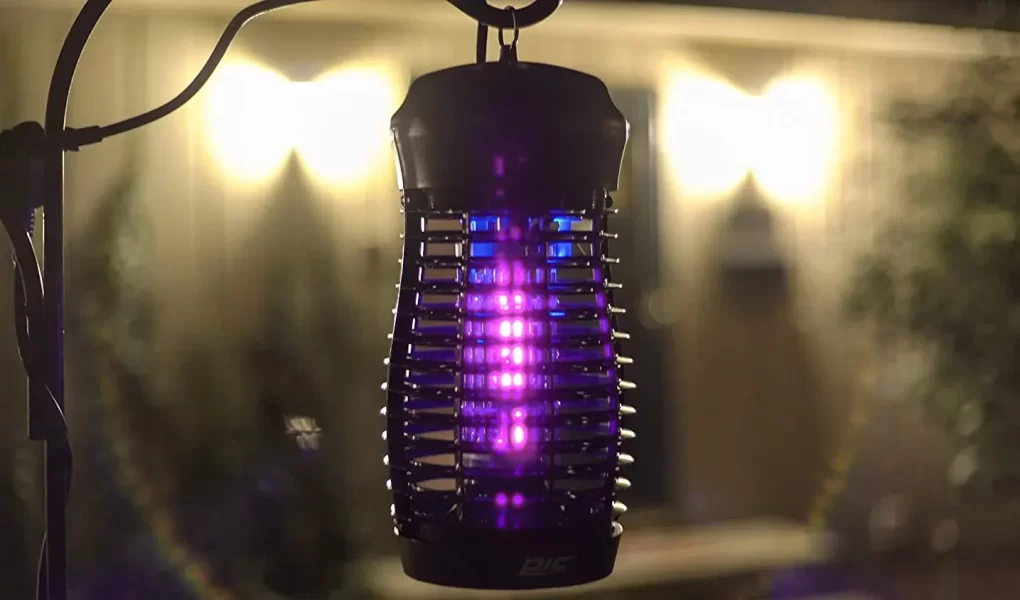LED lights have revolutionised how we illuminate our homes, businesses, and outdoor spaces. Beyond their energy efficiency and durability, LED lights also offer unique benefits regarding pest control. Specifically designed LED lights can attract and kill insects, providing an effective and environmentally friendly solution for managing unwanted pests. This article will explore how LED lights that kill bugs work, their advantages over traditional insect control methods, and considerations for using them effectively.
How LED Lights Kill Bugs:

LED lights that kill bugs utilise a combination of light wavelengths and optical technology to attract insects and eliminate them. These lights are typically equipped with special bulbs that emit ultraviolet (UV) light, which is highly attractive to many flying insects, including mosquitoes, flies, moths, and beetles. In addition to UV light, some LED bug zappers incorporate features such as electrical grids, adhesive traps, or vacuum suction mechanisms to capture and dispose of insects effectively. When insects are drawn to the UV light emitted by the LED bug zapper, they approach the device and are either electrocuted upon contact with the electrical grid or trapped by the adhesive surface.
Advantages of LED Bug Zappers:
LED bug zappers offer several advantages over traditional methods of insect control, making them an attractive option for both residential and commercial applications:
- Efficiency: LED bug zappers attract and eliminate flying insects, providing continuous protection against pests without constant monitoring or intervention. Combining UV light attraction and effective trapping mechanisms ensures reliable performance and long-lasting results.
- Safety: Unlike chemical insecticides or pesticides, LED bug zappers pose no risk to humans, pets, or the environment. They operate without harmful chemicals or toxins, making them a safe and eco-friendly pest control alternative indoors and outdoors.
- Low Maintenance: LED bug zappers require minimal maintenance and upkeep compared to traditional insect control methods. With durable LED bulbs that last for thousands of hours and easy-to-clean trapping mechanisms, these devices offer hassle-free operation and long-term reliability.
- Versatility: LED bug zappers are available in various sizes, styles, and designs to suit applications and preferences. Whether you need a compact unit for indoor use or a heavy-duty model for outdoor protection, LED bug zappers are available to meet your specific needs.
- Cost-Effectiveness: While the upfront cost of LED bug zappers may be higher than traditional insect control methods, their long-term cost-effectiveness makes them a wise investment. With energy-efficient LED bulbs and durable construction, LED bug zappers provide years of reliable performance with minimal operating costs.
Considerations for Using LED Bug Zappers:
While LED bug zappers offer effective and eco-friendly pest control, there are some important considerations to keep in mind when using these devices:
- Placement: Proper placement of LED bug zappers is essential for maximising their effectiveness. Position the devices strategically where flying insects will likely congregate, such as near entryways, outdoor seating areas, or around light sources. Avoid placing bug zappers too close to areas where people gather to minimise the risk of insects being drawn towards humans.
- Maintenance: Regular maintenance is critical to ensuring the optimal performance of LED bug zappers. Clean the device regularly to remove trapped insects, debris, and dust buildup that can interfere with its operation. Replace the bulbs as needed to maintain optimal UV light output and attraction for insects.
- Safety: While LED bug zappers are safe for humans and pets, using them responsibly and following manufacturer instructions is essential. Keep the devices out of reach of children and pets to prevent accidental contact with electrical components or moving parts. Exercise caution when handling or cleaning the devices to avoid injury.
- Compatibility: LED bug zappers may not be effective against all types of insects, particularly those not attracted to UV light. Consider the specific pests you target and choose a bug zapper model to control those insects effectively. Additionally, LED bug zappers may be more effective in particular environments or climates, so consider factors such as temperature, humidity, and airflow when selecting and using these devices.
- Regulations: Some regions may have rules or restrictions regarding the use of insect control devices, including LED bug zappers. Before purchasing or installing a bug zapper, check local ordinances, homeowners’ association rules, or environmental regulations to ensure compliance with applicable laws and guidelines.




